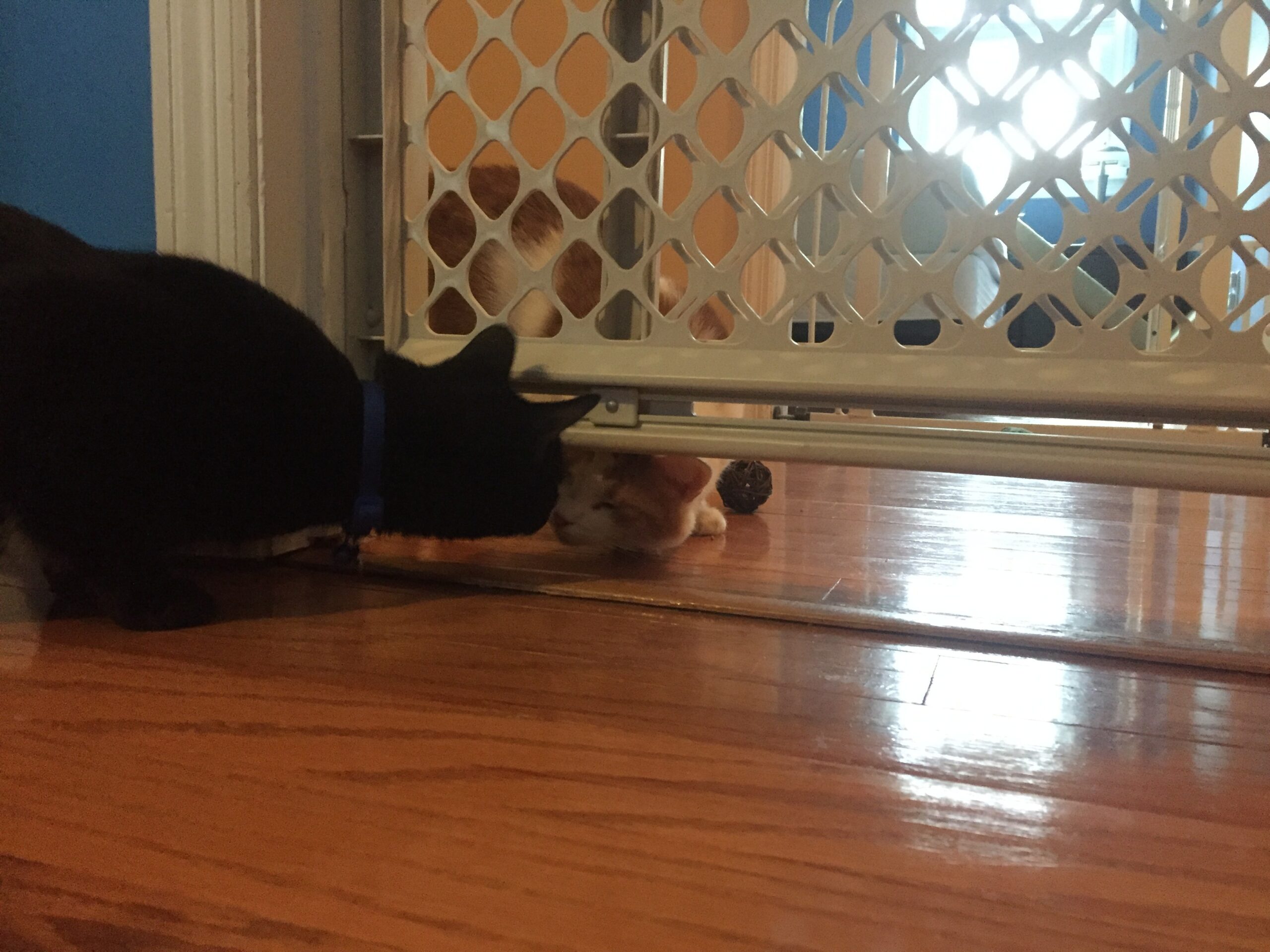The most crucial step in integrating your new cat with your existing cat(s) is to take your time. For tips on how to introduce cats go as smoothly as possible, read our suggestions. Too soon introducing the cats to one another could provide a negative initial impression that may never be overcome. Many people assume that if their present cat has previously coexisted with another cat that the introduction of a new cat would go smoothly. This isn’t always the case, especially if you recently lost one of a pair of cats that were quite close.
Do These Cats Get Along?
It’s crucial to take a close, honest look at each cat to decide if introducing them is a smart idea before thinking about how to do it. Think about the following:

- Cat breed: Some cat breeds are friendlier than others. Do some research on the breeds of your cats to determine how likely it is that your animals will get along and how much training it will probably take to get them to live in harmony.
- Size: If one of your cats is significantly bigger than the other, there may be a higher risk of aggression or harm. Of course, there are always exceptions, but the size is a crucial consideration when it comes to introducing these furry pets in a secure manner.
- Socialization history: If your cat is really amiable and treats other animals with kindness, it will probably treat a new creature in your home in a similar manner. A new housemate may be frightening to your cat if they are fearful or have never been around other animals before, which could cause them to act aggressively.
- Past encounters: Your cat can be afraid of a new cat in your home if they have previously experienced a traumatic or frightful event involving another feline.
- Energy level: For instance, a low-energy cat may not be the ideal fit for a home with a high-energy kitten, and the opposite may be true.
How to introduce cats
Let’s begin by outlining our expectations: It takes time to introduce cats to a household. In reality, some cat couples may never be able to coexist peacefully, while other cat pairs may take weeks or months to begin to feel at ease around each other. Don’t rush any animal through this process; instead, go at your cats’ pace to maximize your chances of success. Take a pause and go back to the previous phase if either cat exhibits any of the following indicators of stress.
Your cats should first be entirely separated

Assure your new cat has access to food, water, a litter box, a scratch pad, and toys in their own space. Keep the door closed to keep your other cat out, and use caution when opening the door to avoid unpleasant surprises.
To avoid unintentional interactions as you travel from one area to the next, it is a good idea to install a pet fence in the space between their respective quarters. Before progressing to more direct encounters, this stage is crucial for establishing a baseline level of comfort for both cats. Before moving on to the next phase, let your cats have a day or two to get adjusted to their new space.
Start a new trading session
Through the door, your cats will be able to smell one another, and they will also be able to detect your scent. When you engage with the cats, let them smell your hands and clothes so they may get acquainted with each other’s scents.
You might also cover one cat completely with a towel or blanket, then lay it out on the ground for the other to investigate. If your cats enjoy it, sprinkle favorite treats or catnip all over each towel before inviting them to come over and have a sniff. These will aid in the pleasant associations your cats make with one another’s scent. Play the towel game every day.
Change the cat spacing
Allow the cats to explore each other’s spaces after that, but keep them physically apart by closing the door. Keep a watchful eye on each cat as they navigate the domain of the other cat. You may give the cats a few hours, or even a whole day, to investigate.
Again, let the cats sniff each other under the door, and keep an eye out for any discomfort in either cat. You will be listening for any angry vocalizations, like growling and hissing, because there is a door between them. To return to the previous step if you notice or hear either cat exhibiting these symptoms of stress.
Play is encouraged near the entryway
It’s time to make contact if you haven’t seen any indications of distress for at least 24 hours, but hold off on opening the door. Encourage one cat to bat at a string toy near the door by using it. To get the other cat to come over, place a different string toy beneath the door. Permit the cats to gently bat at their own threads to get them closer to each other at the base of the door. If there is room below the door, encourage the cats to play “patty cake” with each other’s paws.
Watch out for symptoms of agitation from one or both cats, such as hissing, growling, yowling, or hitting hard. Return to the previous step if any of those symptoms appear.

FAQs
When may I leave my kitties both by themselves?
Depending on the cats, you can leave them together at different times. There is no established length of time for the introduction phase. Days, weeks, or even months could pass. However, if after taking the aforementioned precautions neither cat exhibits signs of stress or aggression, you can start allowing them to spend time together unsupervised.
If you are unsure whether your pets are secure when left alone together, keep them apart anytime you are not around to supervise—even if this means keeping them apart for months, years, or even their whole lives. When you consider the potential alternative of one or both of your pets getting hurt, it is a tiny annoyance, yes.
What if my cats are still fighting?
Review your actions if your cats aren’t adjusting. When introducing cats, it’s crucial to move cautiously. Rushing will get you nowhere quickly. In some cases, starting over with the protocol even more slowly is worthwhile.
Consult a Certified Behavior Consultant if your cats are still having trouble getting along. These experts can assist you in determining whether your cats are a good fit or whether they require more training.
READ MORE

